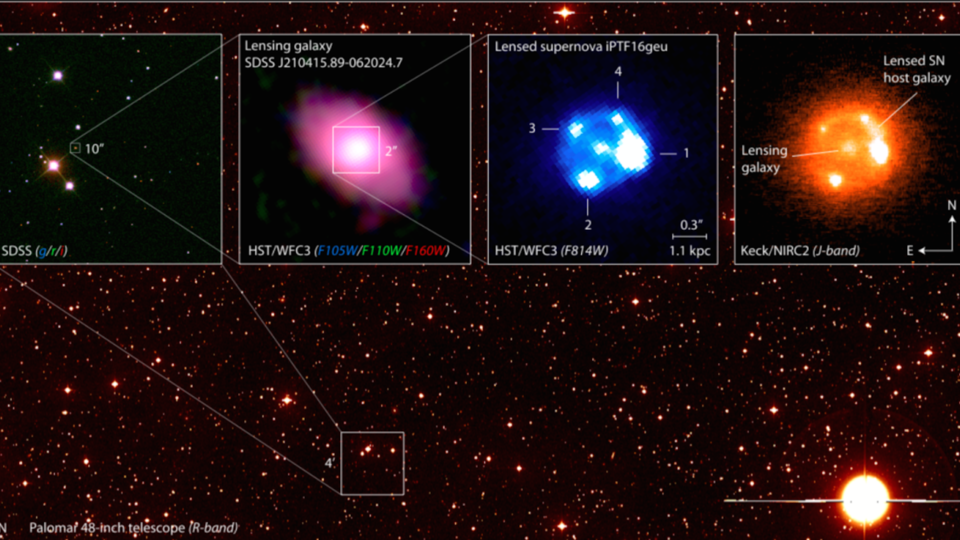Each month, renowned astronomers share their latest research at Morrison Planetarium.
Universe Update
A Distant Star's Explosion Magnified

On the eve of science marches around the world, a super-cool rare discovery, published in Science this week, gives us one more reason to celebrate science. “The discovery of iPTF16geu is truly like finding a somewhat weird needle in a haystack,” explains co-author Rahman Amanullah of Stockholm University. “It reveals to us a bit more about the Universe, but mostly triggers a wealth of new scientific questions. That’s why I love science and astronomy.”
What is iPTF16geu? A Type Ia supernova, four billion light years away. As Amanullah hints, it shouldn’t have even been seen. But, luckily for us, the event was magnified 50 times through gravitational lensing.
Gravitational lensing occurs when the gravity of a cosmic object, such as a galaxy, acts (as the name suggest) like a lens, bending and magnifying the light of a more distant object. The effect can cause galaxies to appear strangely twisted, and even produce multiple images of the same object. While it’s been observed many times since the early 20th century, when first predicted by Albert Einstein—his theory of general relativity explains that matter curves the surrounding space-time and that this curve can create a “lens” that deflects the path of passing light and makes distant objects appear larger—imaging a lensed Type Ia supernova has proven formidably difficult, until now.
“I’ve been looking for a lensed supernova for about 15 years. I looked in every possible survey, I’ve tried a variety of techniques to do this and essentially gave up, so this result came as a huge surprise,” says lead author Ariel Goobar. “One of the reasons I’m interested in studying gravitational lensing is that it allows you to measure the structure of matter—both visible and dark matter—at scales that are very hard to get.”
In this case, a galaxy two billion light years away acted as the magnifying glass for the supernova, which caught the eye of the Palomar Observatory on September 5, 2016. The telescope scans the sky every night for just such events. Once detected, other telescopes are alerted to perform follow-up observations. Within two months of detection, the team observed the iPTF16geu supernova with Hubble, the W.M. Keck Observatory atop Mauna Kea, Hawaii, and the Very Large Telescope (VLT) in Chile.
In this case, the lensing caused the supernova to appear in four different places in the sky, allowing astronomers to measure very accurately how much time it takes for the light from each of the multiple images of the supernova to reach us. The difference in the time of arrival can then be used to estimate with a high precision the expansion rate of the Universe, as well as the amount of dark energy, which is thought to accelerate this expansion.
With this successful find, astronomers hope it might be the first of many more. “I am blown away,” says Shri Kulkarni of the discovery. “When iPTF [the intermediate Palomar Transit Factory] was conceived, we only dreamed of discovering such events. We knew they existed but we honestly did not expect to detect one!” Thanks, Science!
Image: Joel Johansson, Stockholm University